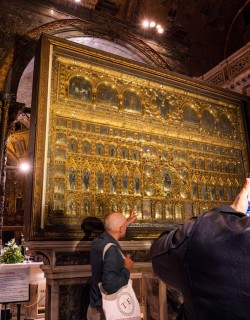Updated 15 April 2024
Venice is one of the world's most amazing open air museums, a living breathing, work of art. There's so much to see here that you could easily have a wonderful time in the Floating City never setting foot in a single museum or gallery. But whilst it might be tempting to spend all your time in Venice exploring atmospheric canals and alleys, there are some landmark collections that you really need to see.
As an art historian and professional tour guide, I'm lucky enough to spend my days guiding visitors around the most beautiful corners of Venice, and dotted all across the Floating City are exceptional museums conserving fascinating slices of the city's rich heritage.
From bombastic Baroque palaces that glitter on the banks of the Grand Canal to modernist marvels, treasure troves of Renaissance art and historic seats of power, whatever you're interested in there's sure to be somewhere in Venice that will fit the bill.
So join us this week on our blog as we count ten of the best museums that you need to see on a trip to Venice!
1. The Accademia Gallery
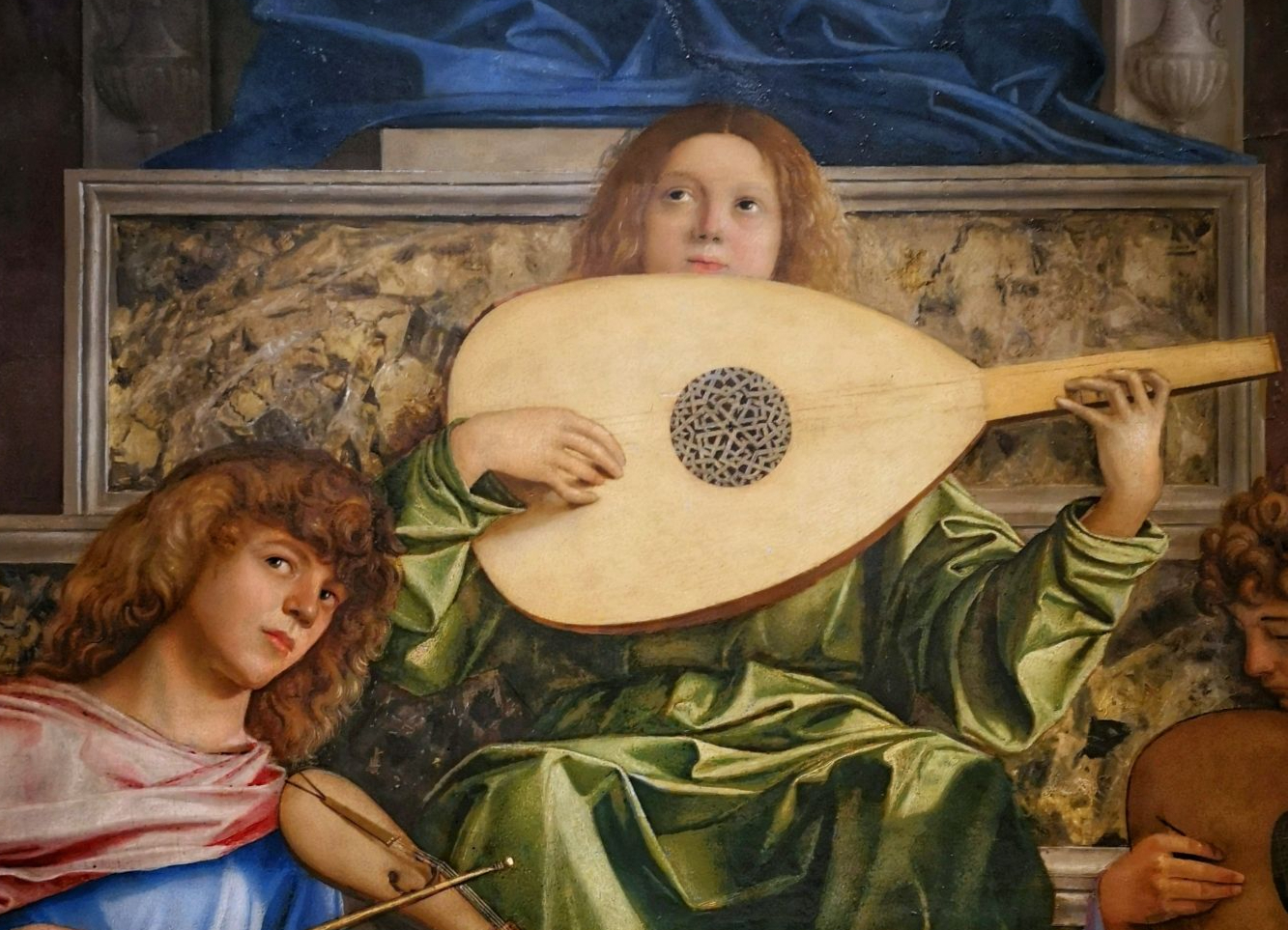
Housed in an ex-church and convent designed by 16th-century starchitect Andrea Palladio, the Accademia is Venice’s pre-eminent art gallery. Inside, the story of Venetian art from the 14th to 19th centuries is told via paintings from all of the city’s most famous sons, from Bellini to Titian, Giorgione to Veronese and beyond.
A visit to the Accademia offers more than just a grounding in Venetian art: if you know how to read them, the highlights of the gallery also tell the whole story of Venice in vibrant historical detail. Tintoretto’s Stealing of the Body of St. Mark, for example, dramatically recounts the audacious 8th-century theft of the apostle’s body from Egypt that led to the building of Venice’s greatest church in a spectacular profusion of light and dark.
The incredible cycle of paintings dedicated to the Miracles of the Holy Cross originally painted for the Scuola Grande di San Giovanni Evangelista, meanwhile, sees the pomp and ceremony of the 15th-century city coming vividly to life. In Vittore Carpaccio's Miracle of the Cross at the Ponte di Rialto, a fleet of gondolas throng the waters of the Grand Canal, whilst the great and the good of the city wait at the water’s edge - all true-to-life portraits of Venetian aristocracy.
For more on Venice's pre-eminent art gallery, discover the highlights of the Accademia on our private Venice Art Tour: The Colours of the Floating City.
2. The Doge’s Palace
Piazzetta San Marco 1

Centrally located between St. Mark’s Square and the waters of the Venetian lagoon on the Riva degli Schiavone, the fabulous Gothic Doge’s Palace was the nerve-centre of the maritime Republic, and remains one of the city’s most important sites - a must visit when in Venice.
There is something of the exotic in the palace’s pink-tinged colonnades and geometric patterns of coloured stones, reminding us that Venice’s power was largely founded on its position as a gateway to the riches of the east. The Palazzo Ducale was founded sometime in the 10th century, while the distinctive architecture we see today mostly dates from the 1300s and 1400s.
As home to Venice’s ruling doges, the palace is seriously impressive inside: climb Jacopo Sansovino’s Scala d’Oro - a lavish stairway of gold - to arrive in the Doge’s private apartments and gain a fascinating insight into the luxurious lifestyle of the Renaissance Venetian court.
Scarcely less impressive are the wonderfully decorated halls and chambers that played host to the massive bureaucracy of the Venetian State: the yawning Sala del Maggior Consiglio is one of the largest rooms in Europe, and features an insanely large painting by Domenico Tintoretto depicting Paradise peopled with no fewer than 500 real-life Venetian bigwigs. The Sala Consiglio dei Dieci meanwhile was home to the city’s fearsome council of ten, who took grave decisions of statecraft beneath Veronese’s Juno Bestowing Her Gifts on Venice.
The Doge’s Palace is also home to the iconic Bridge of Sighs, which leads to the dingy prisons where luminaries such as Cassanova cooled their heels after getting on the wrong side of Venice’s ruling elites. Drink in a spectacular view of the Venetian lagoon, and be thankful that it's not your last before being led away to the cells!
3. The Scuola di San Rocco
San Polo, 3052
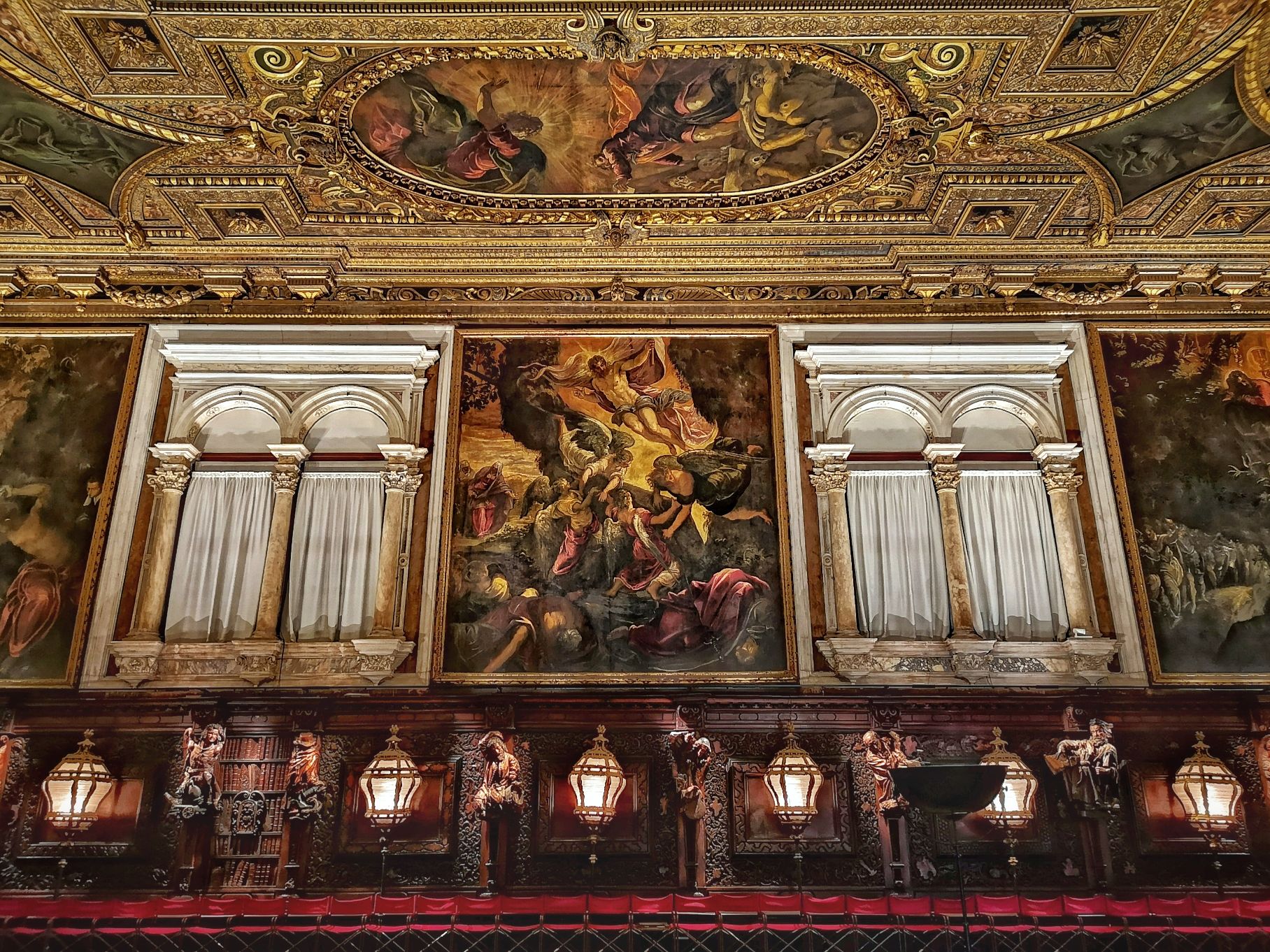
Venice’s great scuole, or schools, were powerful lay-religious institutions dedicated to charity, and played an important role in Venetian public life for centuries. Frequently fabulously wealthy and obsessed with the prestige of their organisations, the confraternities were also amongst the city’s most lavish patrons of art.
Founded in 1478 and dedicated to the plague-busting saint Roch, the Scuola di San Rocco was perhaps the most impressive of them all. A unique place where art, faith and history intertwine, the school is an incredible testament to the creative energy of a single man - Jacopo Tintoretto.
The confraternity’s elite membership were determined that their meeting halls be adorned with the most spectacular decorations in the city, and so staged a competition to find the best candidate. After bribing the panel with a dazzling painting that he offered free of charge in order to get the commission, Tintoretto spent more than 20 years adorning the walls of the school’s sweeping halls with more than 60 massive paintings depicting religious themes, each shimmering with the unique light effects and dizzying perspectives that made the artist famous.
Make the climb up the magnificent Grand Staircase and emerge in the enormous Sala Grande Superiore and drink in one of the greatest achievements in Italian art. The Scuola di San Rocco is a highlight on our Venice Art Tour, the perfect introduction to Venetian art.
4. The Murano Glass Museum
Fondamenta Giustinian 8
The beautiful island of Murano has been one of the world’s most important centres of glassmaking for over 800 years, ever since the glassblowers of Venice were forced to decamp en-masse to the remote spot after one too many fires from their furnaces ripped through the cramped city.
Learn all about the unique techniques employed by the Murano artisans in the island’s Museo del Vetro, housed in the ex-palace of the local bishop. Admire glass artefacts from as far back as the 5th-century BC all the way through to the heyday of the craft in the Renaissance and Baroque periods and up to the present day in a series of ornate rooms, and discover how glass is blown in the museum’s interactive displays.
If you'd like to visit Murano and the other islands in the Venetian lagoon, Through Eternity Tours offer expert-led itineraries to Murano, Burano and Torcello. Check it out here.
5. Ca’ Pesaro
Fondamenta de Ca’ Pesaro 2076
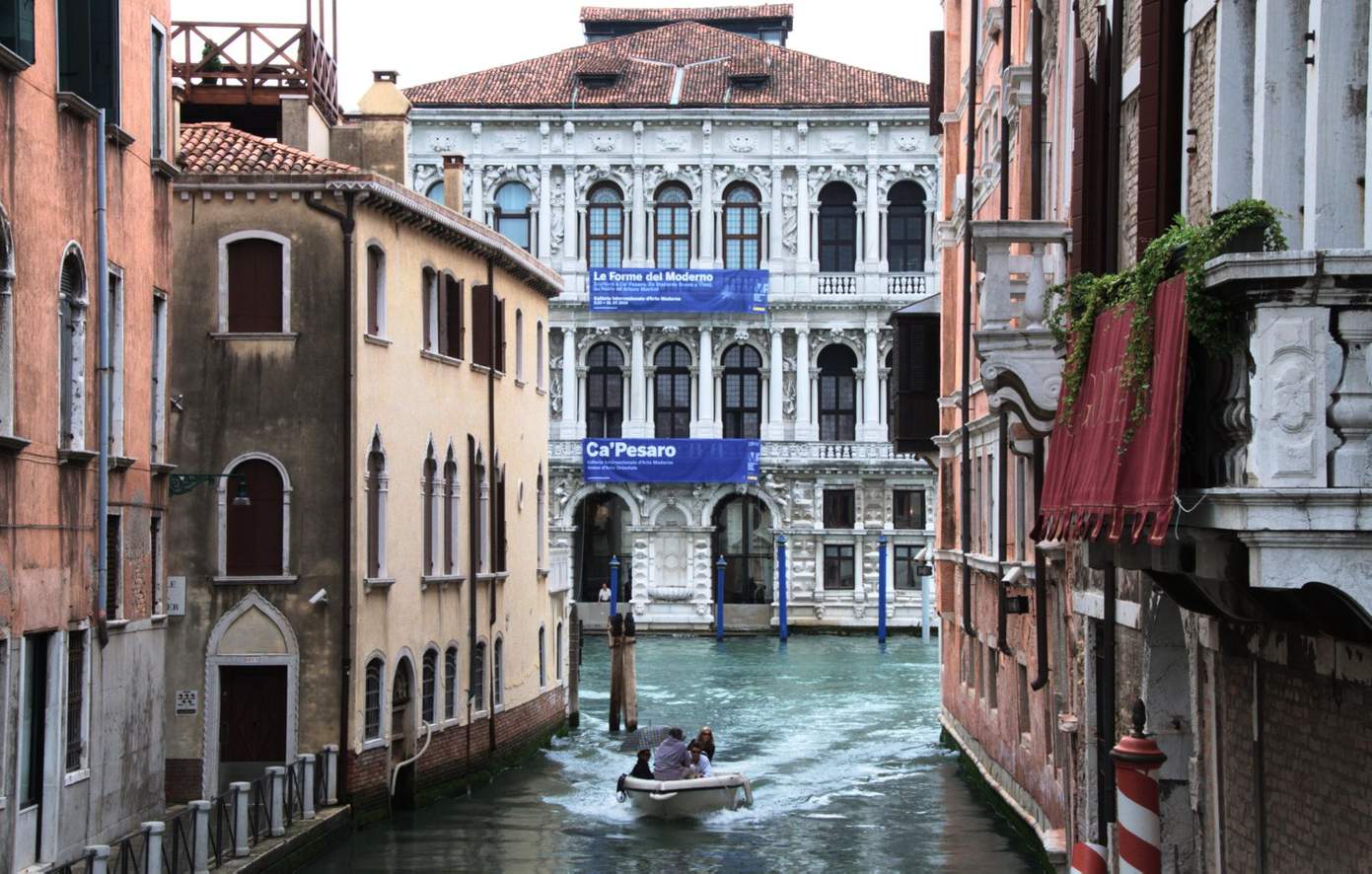
One of Venice’s most spectacular waterfront palaces, the Ca’ Pesaro positively sparkles from its enviable position on the edge of the Grand Canal. Designed by Baldassare Longhena in the second half of the 17th century at the behest of one of the city’s richest aristocratic families, the palazzo boasts a magnificent classicising facade and an elegant courtyard surrounded by loggias.
The sumptuous interior, decorated with fine 18th-century frescoes and oil paintings, is home to two separate museums telling the story of two very different artistic heritages. In the Galleria Internazionale d’Arte Moderna, housed here since 1902, you’ll come across modernist masterpieces from the likes of Kandinsky, Matisse, de Chirico, Miro, Rodin and more.
A particular highlight is Gustav Klimt’s Judith II. The Museo d’Arte Orientale, meanwhile, provides a showcase for the priceless collection of East Asian art that Prince Enrico di Borbone carted back from the Orient in 1889, and includes sculptures of samurai, delightful netsuke, chess-sets, painted screens and more.
MORE FOR YOU: A DAY IN VENICE
Can Venice live up to its reputation? Find out with us!
6. Ca Rezzonico
Dorsoduro 3136
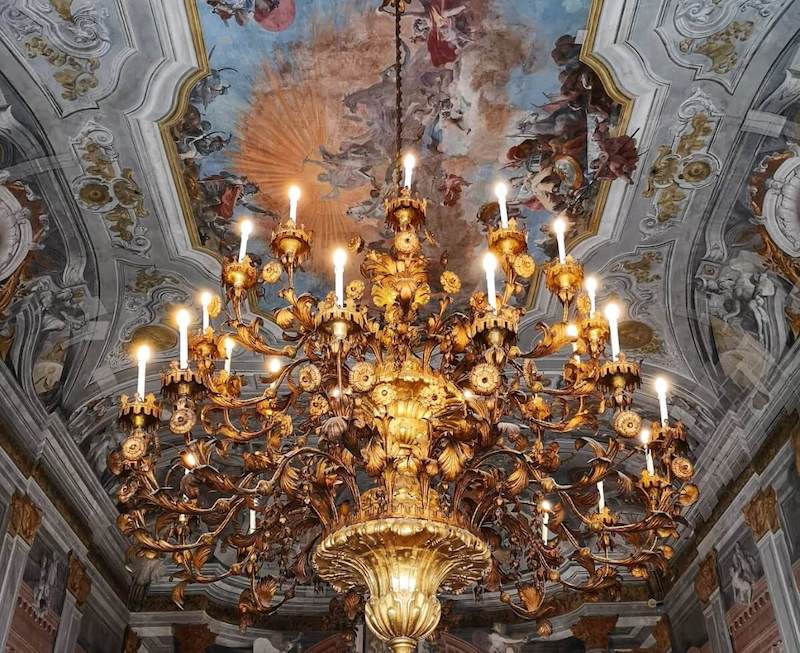
Giving the Ca Pesaro a run for its money in the spectacular palace stakes is the equally splendid Baroque Ca Rezzonico. Here too a stunning facade overlooks the Grand Canal, with a grand entrance leading into the palace directly from the water. The palace was originally commissioned in the mid-seventeenth century by the Bon family, who also hired the services of Baldassare Longhena.
Sadly the family finances weren’t quite up to the undertaking, and the project would have to wait another century to reach fruition when the eye-wateringly wealthy Giambattista Rezzonico purchased the unfinished building in 1750, entrusting its completion to architect Giorgio Massari. The magnificent palace was unveiled just 6 years later, and the rise of the Rezzonicos was complete two years later when Giambattista’s son Carlo was elected pope as Clement XIII.
Strolling through the palace’s opulent chandelier-lit halls today is like stepping back in time to the splendours of 18th-century Venice – the palace boasts its own massive ballroom, countless boudoirs, and even a throne room adorned by a fabulously frothy ceiling fresco by Giambattista Tiepolo where the Rezzonico clan are being introduced to heaven.
More masterpieces from Tiepolo’s brush adorn the other salons, alongside works by Canaletto, Guardi, and others. The palace so enchanted Cole Porter that he rented the entire pile in the 1920s, throwing lavish parties that rivalled the Venetian golden age complete with gondolier footmen and a troupe of tight-rope walkers.
7. Palazzo Grimani
Ramo Grimani 4858
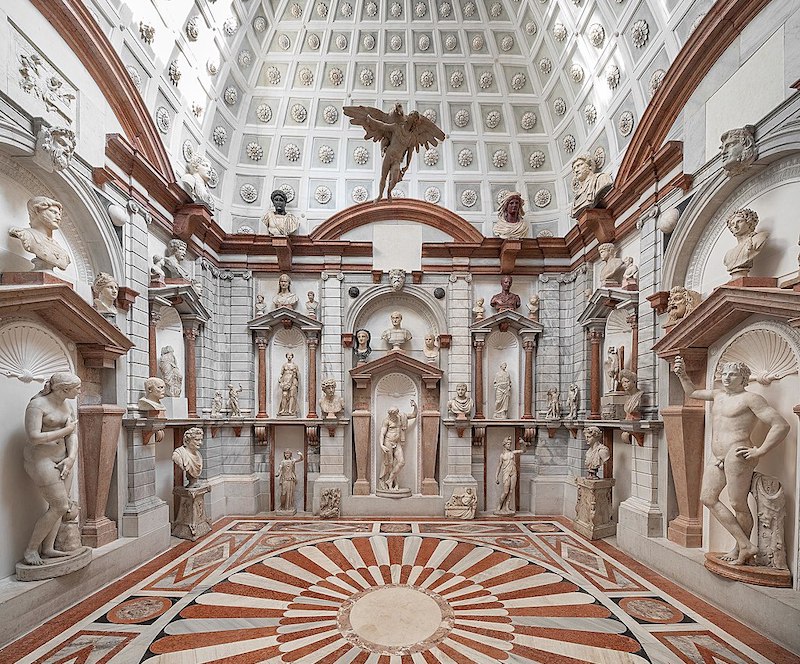 Photo by Palgri, CC BY-SA 4.0, via Wikimedia Commons
Photo by Palgri, CC BY-SA 4.0, via Wikimedia Commons
This remarkable palace features an excellent collection of classical sculpture in the surroundings of some of the most innovative architecture in Venice. One of the most important families in 16th-century Venice, the Grimaldi clan were also avid collectors of ancient art and antiquities, and the collection amassed by Giovanni Grimani was amongst the world’s finest.
So much so that their home became something of a pilgrimage for important personages arriving in the city, including no less a figure than King Henry III of France. Grimani made the at-the-time unheard of gesture of donating much of his collection to the Republic of Venice on his death, on the condition that it would be open to the public.
Grimani’s collection eventually became part of Venice’s archaeological museum but, after a recent restoration at Palazzo Grimani, a number of the works have returned to their original location.
The stunning palace is unlike any other historic residence in Venice, as Giovanni directed a 16th-century renovation carried out by a squadron of Roman and Tuscan architects and painters including Giovanni da Udine and Federico Zuccari, who brought the prevailing tastes of their regions to the Serenissima: make sure to visit the Tribuna, a dizzying room filled with antiquities including a sculpture of Ganymede being carried off by Zeus up towards the room’s coffered dome, and the Sala ai Fogliami, where the walls are frescoed with vibrant scenes of plants and birds.
8. Peggy Guggenheim Collection
Palazzo Venier dei Leoni, Dorsoduro 701
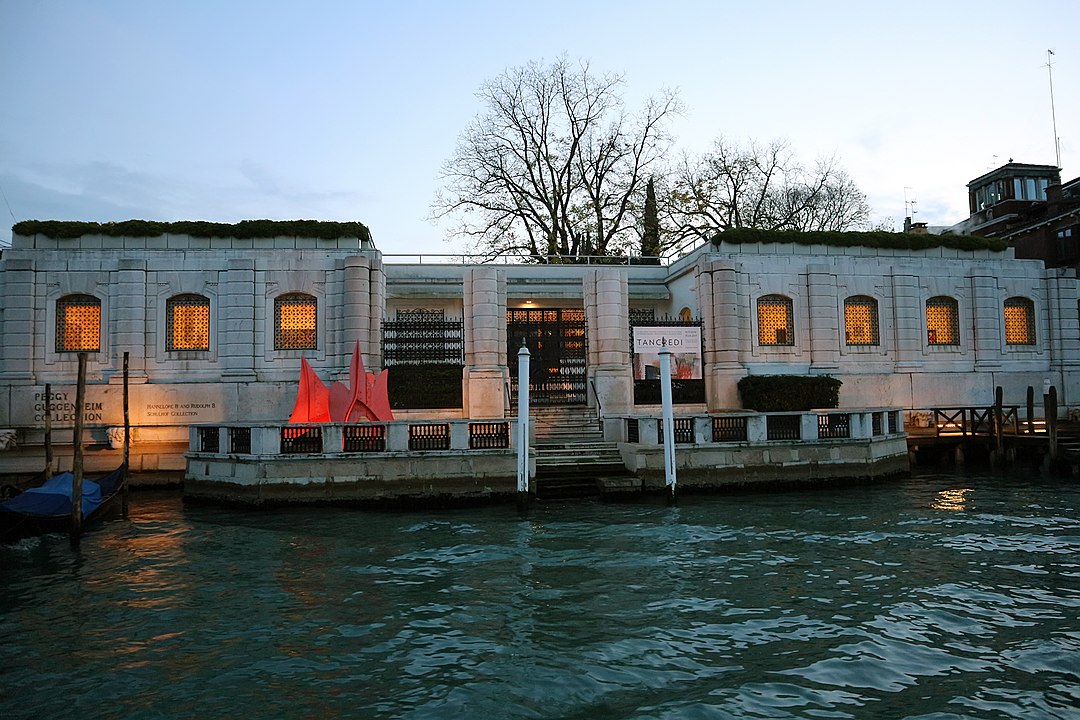 Photo by Andraszy, CC BY-SA 4.0, via Wikimedia Commons.
Photo by Andraszy, CC BY-SA 4.0, via Wikimedia Commons.
The fruits of a lifetime of collecting by the 20th-century’s most famous art-philanthropist are superbly displayed in Peggy Guggenheim’s amazing canalside palace, the Palazzo Venier dei Leoni. Heiress to one of the most famous and wealthiest families in the United States, after her father’s demise on the Titanic in 1912 Guggenheim dedicated her life to showcasing the works of the finest contemporary painters.
The Venice collection offers a crash course in the many genres that make up the patchwork of modern art, from surrealism to futurism and abstract expressionism. The beautifully decorated interior gives a vivid insight into the febrile world of the avant-garde, and includes paintings by Picasso, Jackson Pollock, Dalí, Max Ernst, Rothko, Chagall and virtually every other 20th century master.
Don’t miss the beautiful sculpture garden, where Peggy herself is buried surrounded by statues created by Giacometti, Henry Moore, Anish Kapoor and others.
9. Palazzo Grassi
Campo San Samuele 3231
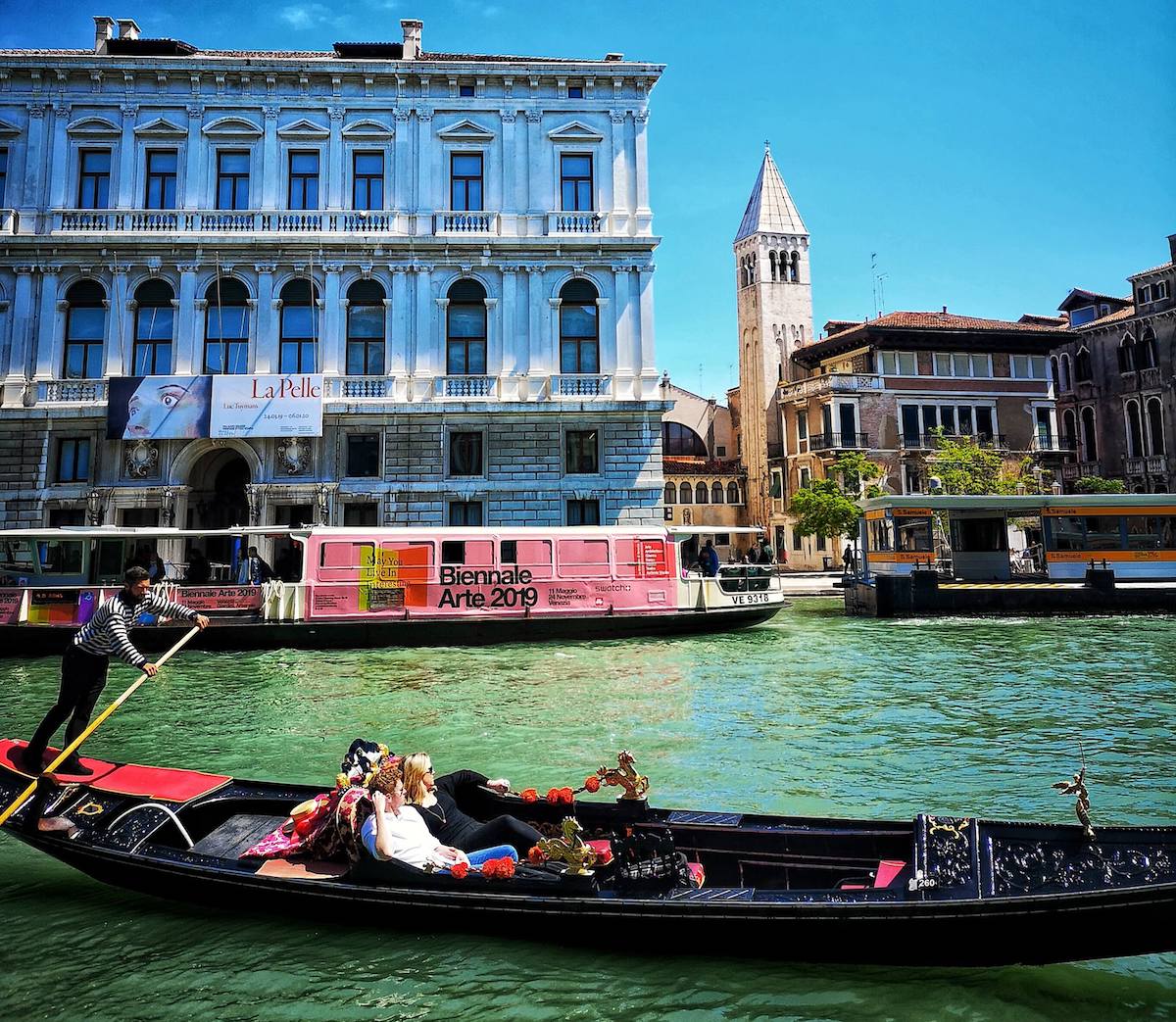
Home to the contemporary art collection of eccentric French billionaire Francois Pinault, imposing Palazzo Grassi was the last monumental palace to be built along the Grand Canal when it was completed in 1772.
Restorations in 1986 and 2005, the latter by Japanese minimalist architect Tadao Ando, transformed the Neoclassical edifice into a thrilling space for showcasing daring temporary exhibitions of contemporary art by some of the biggest names in the business, from Damian Hurst to Sigmar Polke.
10. Galleria Giorgio Franchetti alla Ca’ d’Oro
Calle di Ca’ d’Oro 3932

Perhaps the best surviving example of Venetian Gothic architecture in the city, the stunning Ca’ d’Oro owes its name to the glittering gold-leaf decorations that once lit up its facade. The gold might be all gone, but the palazzo remains as spectacular as ever: rows of light-as-air columns, arches and stone tracery reminiscent of the Doge’s Palace across town combine to make the Ca’ d’Oro’s canalside facade as delicate and refined as anything in the city.
Since 1927 the palace has housed the Galleria Giorgio Franchetti museum. Franchetti was a wealthy Turinese baron who sought to return the Ca’ d’Oro to its original splendour when he purchased the run-down edifice in the dying years of the 19th century.
Today the beautifully restored palace is home to a fine collection of Renaissance artworks including a depiction of Saint Sebastian by Andrea Mantegna and Titian’s Venus with a Mirror. Make sure to look out from the two levels of loggie on your way through the gallery for one of the most impressive views of Venice’s Grand Canal.
Through Eternity Tours offer a range of expert-led Venice small group tours and private itineraries, from tours of Saint Mark’s basilica and the Doge’s Palace to off-the-beaten track sites and visits to the islands of the Venetian lagoon. Check out our Venice tours page for more, and get planning your perfect trip to the Floating City!
MORE GREAT CONTENT FROM THE BLOG:
- What to Do on Your First Trip to Venice
- How to Visit St. Mark's at Night
- The Amazing Islands of Venice
- The Bridge of Sighs: Venice's Most Famous Bridge
- All You Need to Know About Gondolas in Venice
- 10 Dishes You Need to Try in Venice





